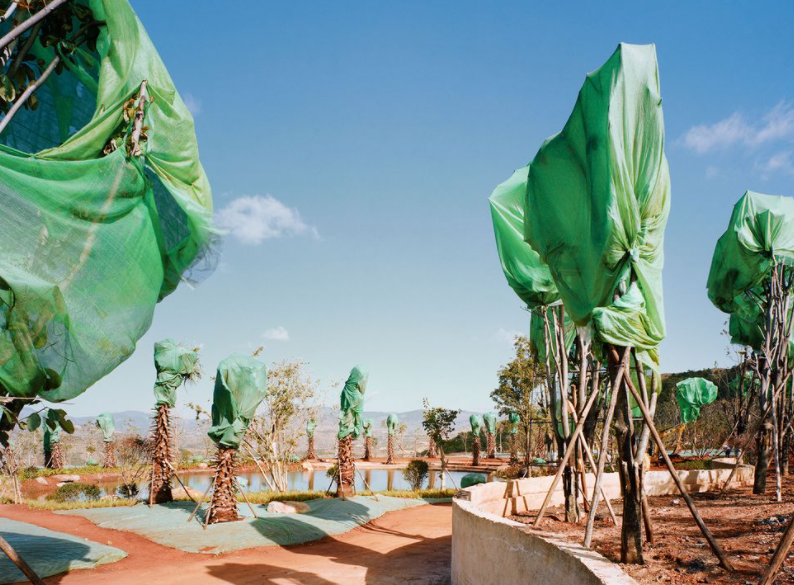
Few environmental campaigns in China have been so embraced or controversial as the Great Green Wall. Every spring, government officials, teachers, students and company employees go on group tree-planting trips. The country’s media singles out forest workers for praise. Movie stars line up to become ‘tree-planting ambassadors.’ March 12th is National Tree Planting Day in China.
The ‘holiday’ was launched in 1978 to protect the north, northwest and northeast. These three regions are most strongly affected by sandstorms sweeping out of the Gobi Desert. Known as the North Shelter Forest Program, it is aimed to grow 35 million hectares, aka 87 million acres, across the country’s northern regions by 2050. That’s a forest the size of Germany just in case you were wondering.
Since the project began, planting trees has become one of the private and public sector’s favorite ways to combat climate change. From the start, however, the project has had its share of problems due to poor planning, the unrealistic demands of local party cadres and a lack of understanding as to where and how a forest can successfully grow.
Although the mission was to take 72 years, local officials wanted results quickly. As a result, the vast majority of trees that were planted were fast-growing poplars. Why? These poplars can withstand the region’s cold, dry winters. Unfortunately, by the 1990s, huge numbers of them started dying. They fell victim to the Asian longhorn beetle. This pest loves softwoods such as poplars. Unfortunately, the more trees China planted, the more the Asian longhorn beetle problem grew.
Officials had to cut down millions of infected trees. Some of them wound up as packing crates for China’s burgeoning international trade. As a result, beetle larvae landed in Europe and North America where governments are now spending a great deal of funds trying to control the infestations. Meanwhile, back in China, planting continued. Sometimes, different species were used. Sometimes not because it was easier. At times, twice the number of trees were planted as the land could sustain knowing that about 50% of them could die.
Forest coverage in China has increased from 12% to 22% since 1978. However, China may be overestimating how much carbon its trees are absorbing since the estimates are based on how many trees are planted, not on how many trees actually survive. To exacerbate the problems, the planting of non-native trees in dry regions where most of China’s forestation efforts are unfolding not only leads to a poor survival rate but can also create issues with water scarcity and damage entire ecosystems.
This is not to say that the program does not have any merits or done China any good. China has found more success in adding green spaces to its rapidly constructed cities. Since 2004, about 170 cities have launched ‘forest city’ campaigns designed to green urban areas and curb pollution, a common urban Chinese problem. Each city has added an average of 13,000 hectares of new parks or woods each year. The plan is to cover 40% of China’s urban landscape with trees and green spaces in 7 out of 10 cities by the end of the decade. Ambitious, right?
That’s not to say that this has been a problem-free endeavor. However, China seems to be learning from its mistakes and are getting better about involving local communities. Despite all the setbacks, China still considers its forestation project a success. Whether it is or not remains to be seen.
We hope that you enjoyed this article. We strive to bring you tree news from around the world so you can stay abreast of forestation developments and tree planting initiatives across the globe. We thank you for your continued interest in our blog.











